Your cart is currently empty!
Author: jeremy
-
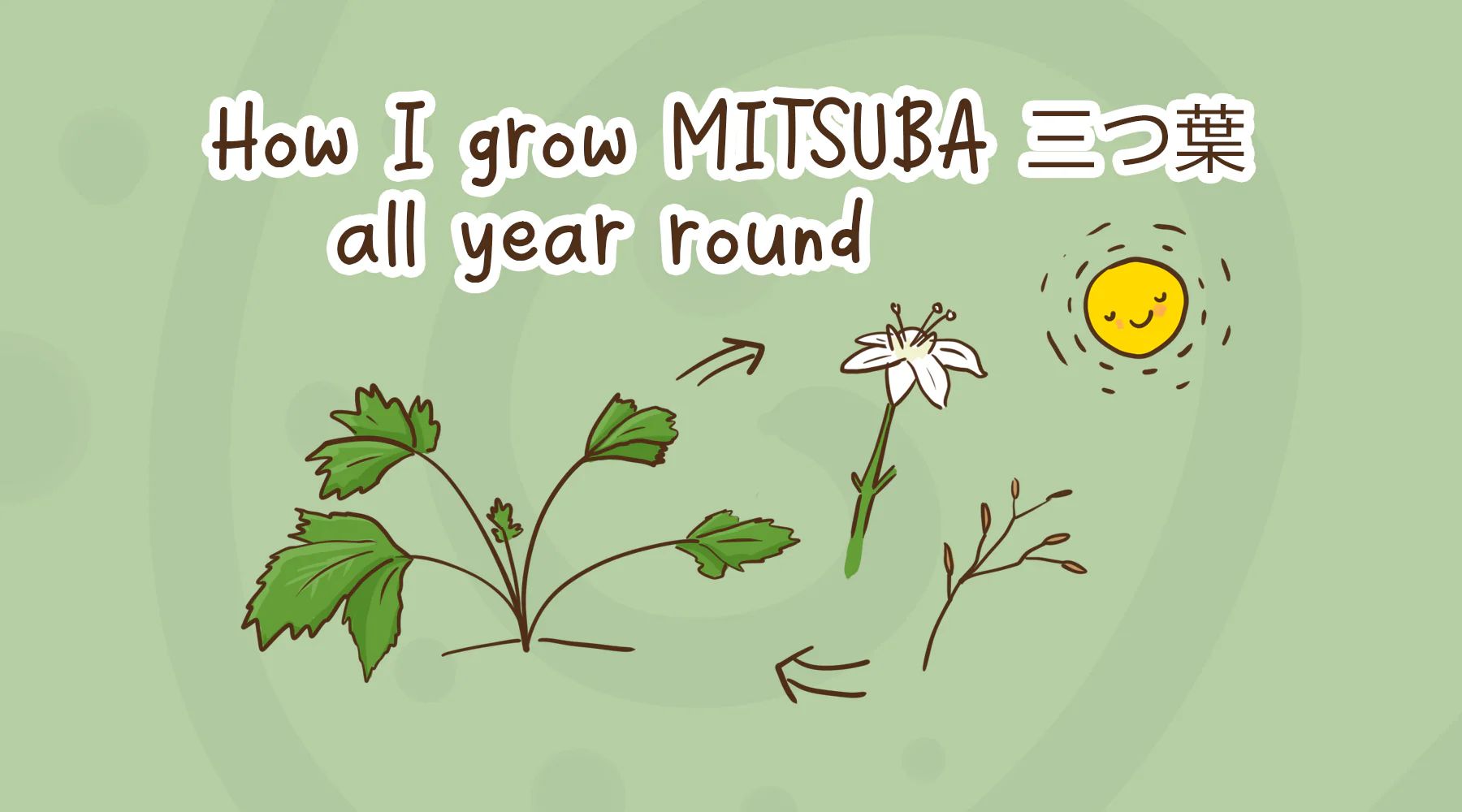
How I grow Japanese mitsuba herb all year round
Mitsuba (三つ葉) is known by a few names and the most common would be Japanese parsley. It’s quite similar to parsley in size and appearance. Other names are wild parsley or Japanese hornwort.
The name
三つ葉 or Mitsu-ba literally means three objects + leaves (three leaves) or compound leaves with three leaflets. It is often spelt using Katakana in nurseries in Japan. The genus is Cryptotaenia and the species is Japonica. It’s a perennial and part of the celery family. I’ve had some plants live a couple years, but they do generally all dry up here in Australia due to the heat. But with a little care, you can keep it alive. Of course as they get older, their bitterness increases.
Varieties of mitsuba
There’s a white and and green variety in Japan but I’ve been used to the white variety from the Kansai region.
Growing locations and season
In Japan mistuba is grown in Shizuoka, Osaka and the east coast around Ibaraki, Chiba, Saitama and Aichi. It’s mainly grown hydroponically (green mitsuba) and harvested about 8 times over the year. There are cut leaf farms and also those that leave the root on the plant when presenting for sale. Peak demand in Japan is in December as it’s used for the new year celebrations.
Seed will sprout here in Western Australia in April and plants are pretty much full size in May. It will grow to almost a meter or 3′ if you give it ideal conditions. In the northern hemisphere at home, it flowers in June-August. You can treat it similarly to parsley, let it go to seed and spread and you’ll have it popping up in the garden each year and staying for another season or so if it’s comfy.
The taste
It’s so unique and I love the tang. It’s got a lovely taste a little like coriander but not as powerful. It’s light, refreshing and can be slightly bitter depending on how it’s collected and prepared. The stems are used in soups in Japan and I love the contrast of the soft crunch of those against the kameboko and steamed vegetables often served with it.
It reminds me of Kyoto, cold winter nights and celebration, but with a subtle refined taste. It’s generally presented in such a minimalist way, so the flavour of the stem or leaves stand on their own. I have some memories of it being used in osumashi with tornado cooked egg or in donburi, that’s not a bad combination either.
Health benefits
The leaves have high levels of calcium, iron, potassium, beta-carotene and vitamin A and C.
Mitsuba’s scent
The scent of the plant contains cryptone (compound also found in eucalyptus and mint) and monoterpene which is said to increase appetite, assist with digestion, relaxation and promoting sleep. It contains other essential oils and monoterpenes such as α-pinene, sabinene, and β-pinene.
Possibly why this is served in osumashi at the beginning of traditional Japanese meals.
It’s beauty
I love seeing it pop up in the garden each year (see above, it’s hot here so they die off). The little sprouts come through and I get excited and give them extra care as I weed in between them. I move some to pots to ensure I have a safe supply. Sometimes they’ll get decimated by cabbage white butterfly caterpillars or snails.
They’re a hardy thing once established and love the water. They have pretty leaves, grow to a manageable size and the flowers are super cute.
It’s just one of those perennials that I allow to go free. It doesn’t take over the garden and it’s so useful in cooking. Plus it’s so easy to manage or just pull out.
The flowers
it has these delicate white flowers that bloom from the schizocarp fruits. They’re super cute as they start off tiny and bloom into basil-like flowers.
Gathering your mitsuba seed
Once the seed has dried on the stalks, I cut the dried stalks off carefully with scissors and run my fingers down it to strip it of seeds and put them into a paper bag for storage. You don’t get too much extra plant material, it’s mainly seed by the time it’s dried.
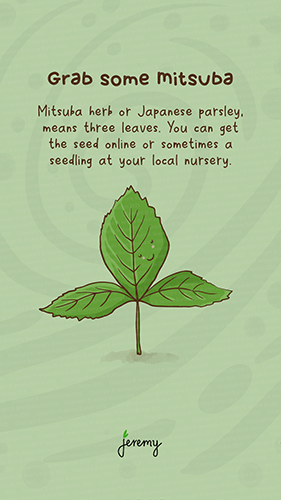
Plant your seed
Plant it into a pot, it doesn’t have to be big to start off. A small 0.5L or 17oz pot is enough to get it started.
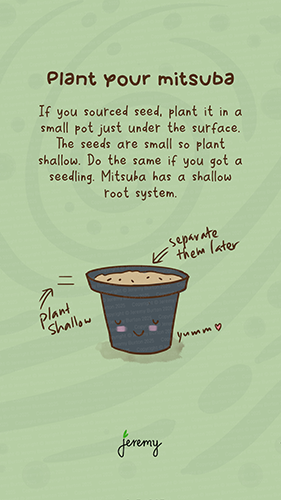
Sunshine and climate
Mistuba likes full sun at times and if it’s really hot, part shade is and a cool, temperate climate. If you give it full sun, you might get the strong bitterness in the leaves.
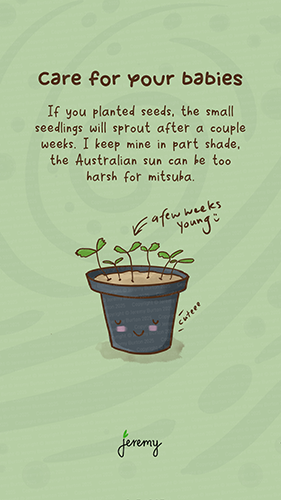
Picking your mitsuba
Harvest the leaves, stalks or root depending on how you want to prepare it. I use the stalks and younger leaves in osumashi. Like parsley, you can just break stalks or leaves off and it will keep producing.
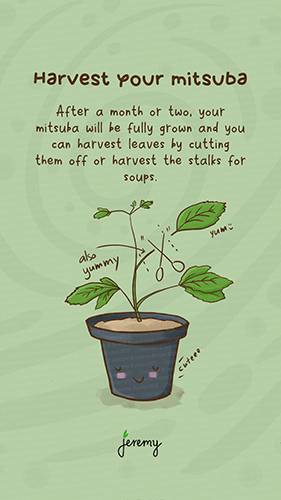
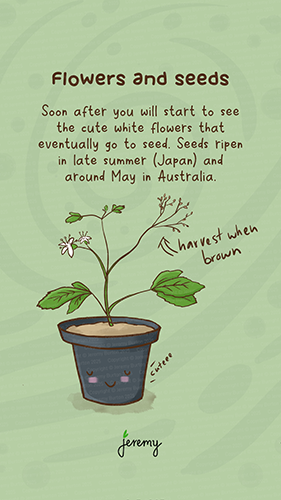
Eat your mitsuba
I had mitsuba often in Kyoto as they blanch the white stalks and add them with small leaves to a clear osumashi soup. I LOVE it and it’s the main reason I sourced seed to get it into the garden. Osuimono (お吸い物) translates to water thing and osumashi is a kind of osuimono. Osumashi generally has a simpler flavour and set of ingredients. Another fave was Japanese clear clam soup (あさりの潮汁), but we’ll talk about that in another blog.
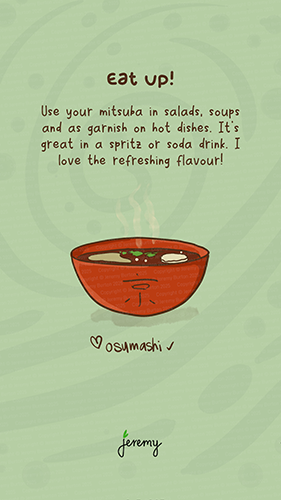
Keeping it alive for next season
Take a cutting and root it in water inside the house. Keep it warm and regrow it like you might for basil. Or, another method is to germinate the seed inside on a silicone mat or in a small pot. It will grow during colder months if you provide warmth, like in the greenhouse.
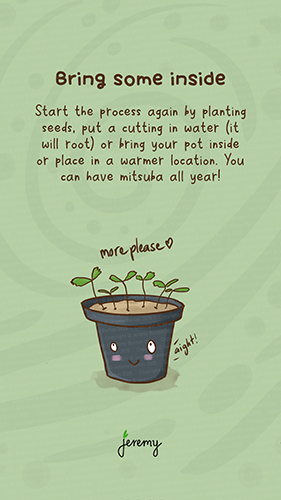
You’ll have mitsuba all year round! Leave a comment if you found this useful!
Join me on Threads for more or subscribe at the bottom of the page for these posts in your email.
-
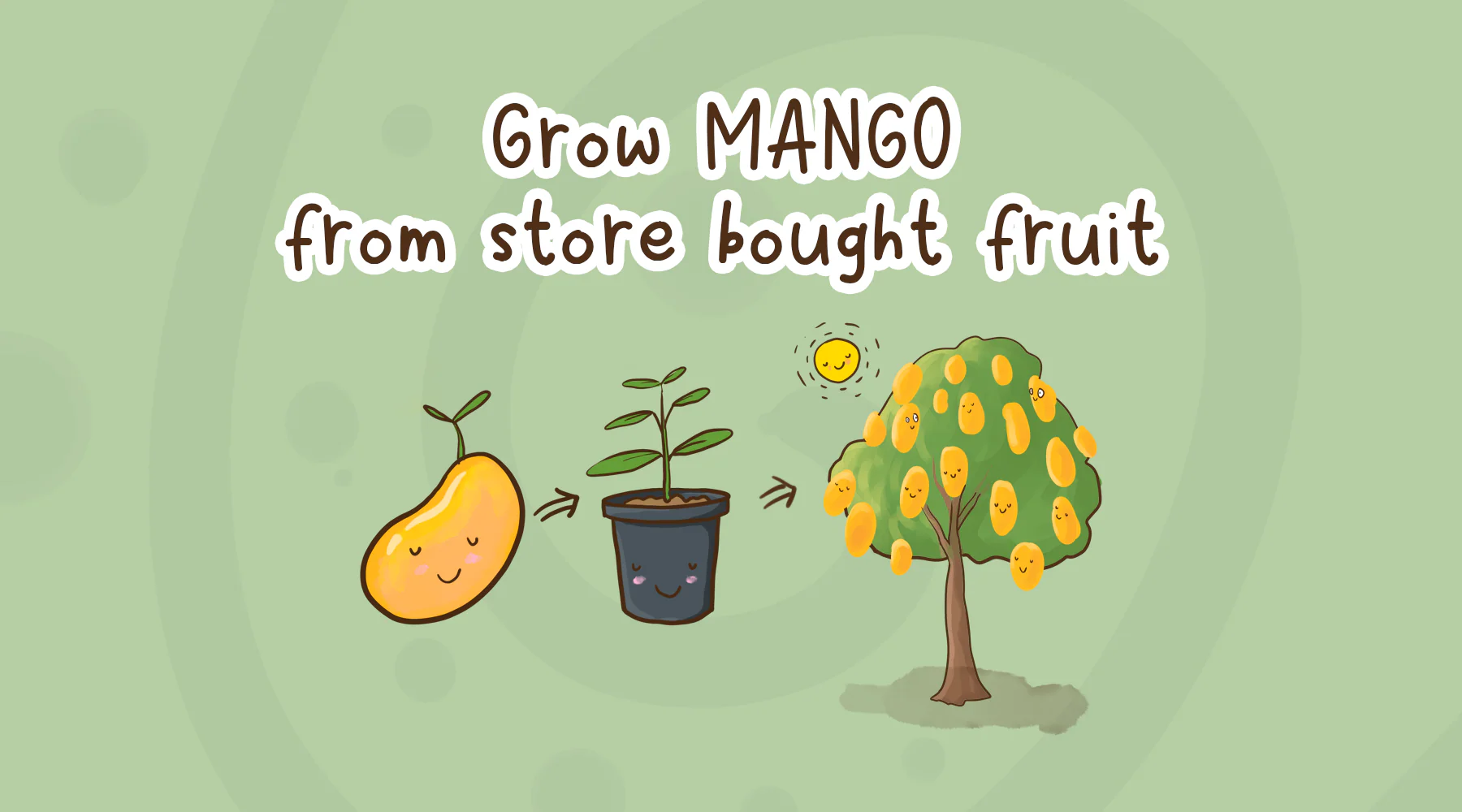
An easy method to grow a store bought mango seed
This article explains how to grow a mango tree from a store bought mango fruit by germinating the seed.
If you’re a mango fan, then you dream of having a huge mango tree that always has massive sweet fruit. You might be lucky enough to live on property or in an area that has trees you can access. Lucky you!
Varieties of mango
In Australia we grow varieties like Kensington Pride, Calypso, R2E2, Honey Gold, and Palmer. I prefer the Honey Gold because of their texture and sweetness. Although I haven’t had a chance to try them yet, I really want to try the Nam Doc Mai.
Eat your mango
Don’t forget to peel it first!I slice both sides and then eat what’s left on the seed. After that I give it a wash and let it dry off for a day or two. It’s easier to handle that way.
Eat your mangoes
It’s time to eat! The best part! What’s the best way to cut a mango?
Dry the stone / kernel
Wash it off and then wrap it in a paper towel. Leave it out for a few days, not in the sun. It should be pretty dried by then. I sometimes put it on an ants nest, they clean it up really well.
Slice open the seed
Grab a flat screwdriver, pocket knife and some scissors. Unwrap the kernel from the paper towel and cut the corners off carefully so that you can see inside the casing. I usually cut one or two corners off.
Then grab your screwdriver and gently pry the case open. It takes a bit of force. Be careful not to damage the soft seed inside. If you do damage it, it may not germinate. The seed is several parts held together in a fragile way. If they break apart, you’ll need a new seed.
When you get the kernel case open, carefully cut through the remainder of the connector between the seed and the case. Now you have your seed! You can leave all of the papery casing (the pit) on it, that’s fine.
Plant your seed
Plant it into a pot, it doesn’t have to be big to start off. A small 0.5L or 17oz pot is enough to get it started. Which direction do you plant the seed? The leaves will sprout from the pointy end of the seed. I usually just lay it on its back, easy.
New mango plant
It will germinate and grow in a 1-2 months. The first leaves come our dark red, then pink and then light to dark green. They’re soft and fragile, I keep mine under shade to prevent sunburn in summer. Usually by the end of summer they’ll be 1-2 foot high and ready for a bigger pot.
Mangoes are not too fussy about the soil, it just needs to be well draining. They are a deep rooting tree (can be 5-6m) so once it gets to a meter or a few feet in your bigger pot, then it’s time to plant it into the ground.
You can germinate the seeds in water and a paper towel. Honestly it’s gonna end up in the soil anyway, just put it in the soil! It is fun to watch though if you want to share the process with the kids, so yeah half submerged in a water container near a kitchen window. Watch it sprout 🙂
After it hits 20cm or 8″ or so it’s ready for the ground, you can play it safe and wait till it’s a meter / 3′.
Sunshine and climate
Mangoes love the sunshine and a warm climate. If you’re in a subtropical or tropical climate zone, your mangoes will love you. They can grow in cooler climates and also inside, but they may not fruit. Ideal temperature ranges are 70–85°F (21–29°C).
In Broome in the north of Australia, there are often cyclones and these can damage the tree branches, knock the fruit off and damage the flowers. I’ve wandered around Broome picking up mangoes off the ground after strong winds.
Pruning
In the first 2-3 years, run it back 30% in height and also the horizontal branches. Mangoes need a good pruning.
Mulch your tree
In Australia we mulch them in Spring and this encourages branching and fruiting. I mulch out to half the width of the tree. You can fertilise with something like you’d use for a berry.
Wait 3-8 years
Yeah, it takes a while. So today’s the day to plant your tree! After 8 or so years you will have beautiful fruit if all goes well. So maybe it’s a good idea to plant more than one. There is a chance of it not making it.
The trees can grow up around 10m, so you’re going need space if you let it go.
Picking your mangoes
Harvest them when they are ripe but not squishy. If they’re squishy they might be over ripe so eat immediately. You’ll notice the green will start to yellow and maybe turning pink.
Eating your mangoes
There are so many ways. But I love them in gelato with coconut, honey and some mint or other herbs.
Hope you found this useful and you grow yourself a huge mango tree. Leave a comment if you germinate a mango seed.
Join me on Threads for more or subscribe at the bottom of the page for these posts in your email.
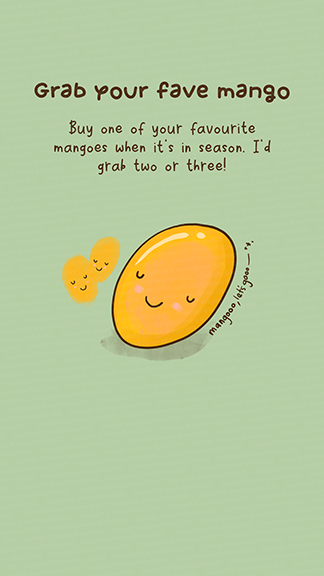
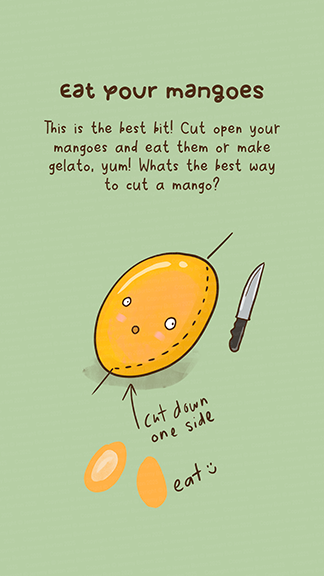
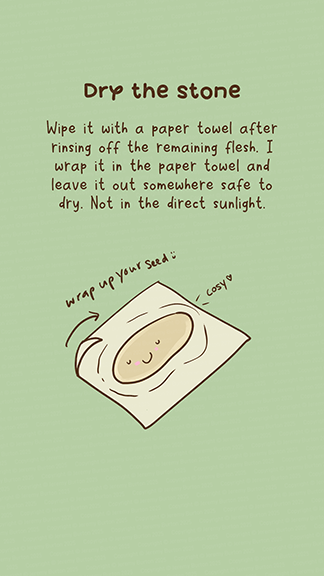

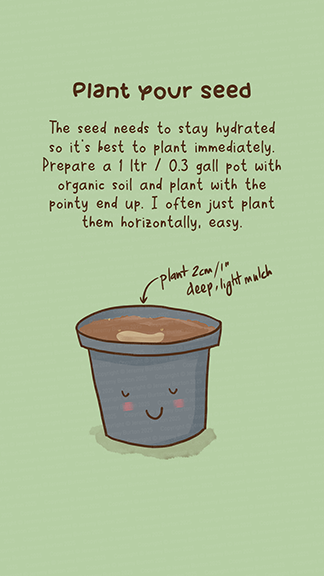
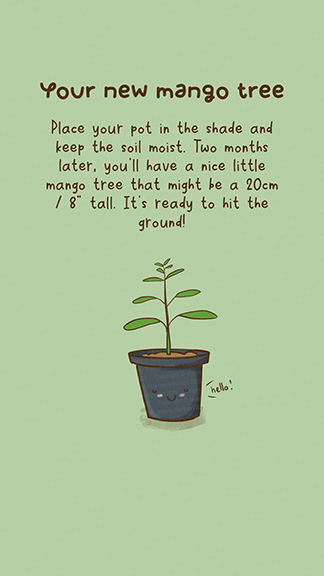
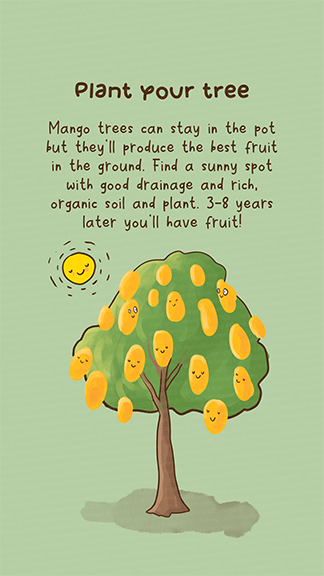
-
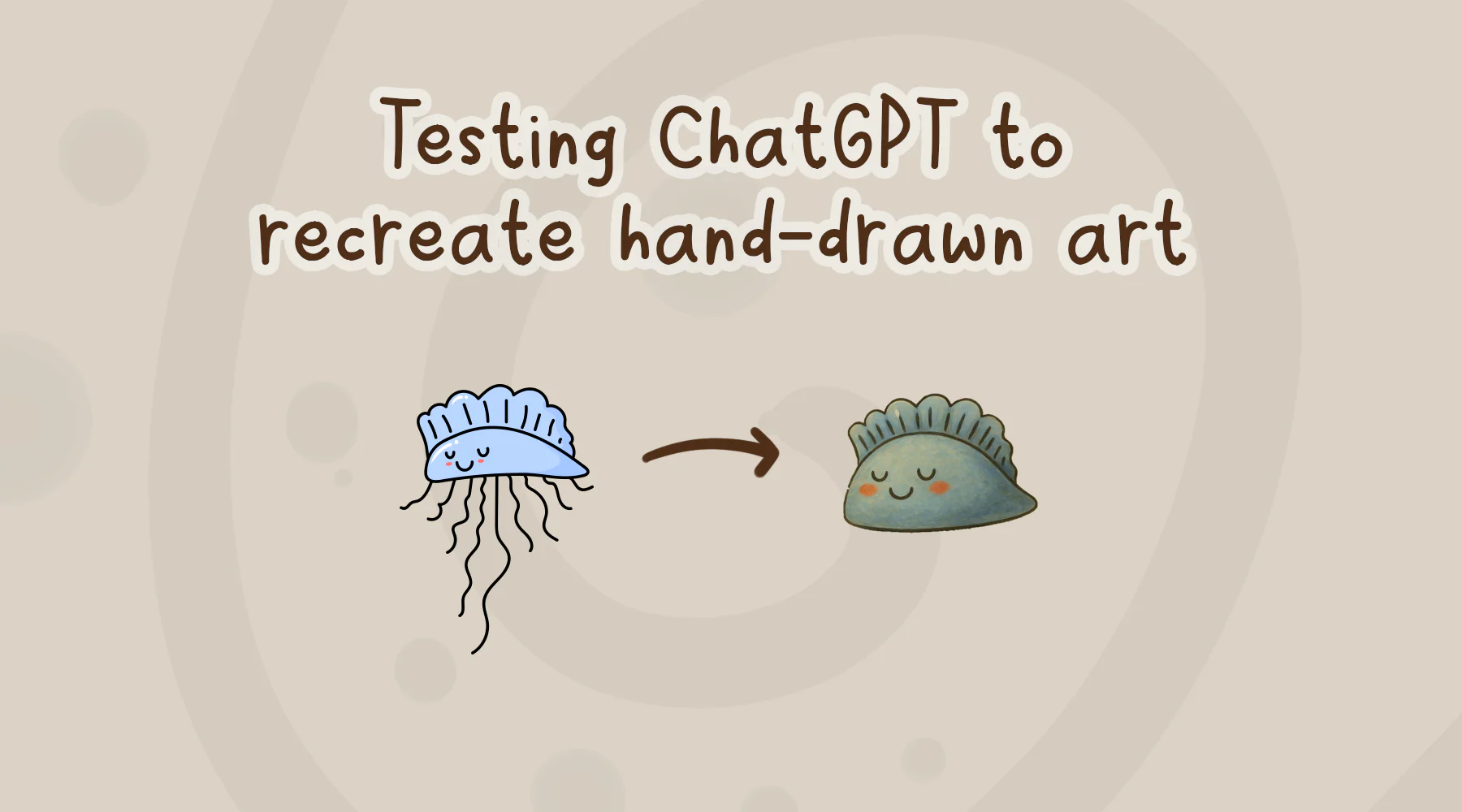
Recreating hand-drawn artwork using ChatGPT experiments
ChatGPT is pretty amazing, I call him G and he calls me Jezza. The fact that we’re leaning on and personalising this AI so much indicates how good it is.
So the major concern from artists is being replaced by AI, G disagrees this is going to happen and I’m on the same page. So I tested it out anyway with a a few simple experiments.
Testing ChatGPT to recreate my art accurately
Seeing all of the pretty amazing outputs from ChatGPT, Kling and others, you’d expect that recreating some line art would be easy for them. But it isn’t, not yet anyway.
I shared one of my character designs with G as an EPS file to kick off the experiment. Firstly, I got a msg that the conversion library (Ghostscript) was not available (I’m using free license) at the time so please recreate it as PNG file format. Okay, did that.
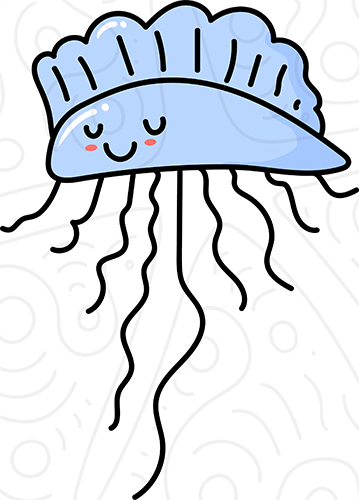
With a clear background and no watermark, it was able to output the same image with a transparent background (background removal).
I asked it then to recreate it in an anime style. Pretty cute, no issue of course. Although this colour pencil mish mash style is starting to look pretty familiar. I’ve seen others ask for children’s drawings and this seems to be a default style.

With a watermark
The test was to take my watermarked icons from a low-ish resolution image, analyse, trace and recreate them out to a transparent PNG. Most art thieves will be using some kind of variation of this method to steal and repurpose art for resell sites.
And the kind of image that eventually came out:

Not bad, but not accurate. G confirms that this is still an area of learning. This is what he has to say:
“I can read and interpret line drawings, and I can clean them up and redraw them, but there are a few catches:
- Precision vs. Interpretation
Line art—especially hand-drawn stuff—can have little imperfections, wobbles, or gaps that I might interpret in ways you didn’t intend. Unlike photorealism, where I lean on texture and lighting cues, line art often relies on very intentional lines—and I need to make sure I don’t over-smooth or misread those. - Style Consistency
You might have a specific feel or style—chunky lines, delicate strokes, organic wobble, etc. When I “redraw” line art, I need clear instructions about what to preserve: do you want it cleaned up but still human, or perfectly vector-precise? - Image Input Limitations (but improving!)
My line detection and redrawing powers have been getting better, but they’re not always perfect at interpreting complex or messy sketches exactly as you see them. That said, if you give me:- A clear sketch or icon set
- Notes on how you want it cleaned (e.g. thicker lines, no overlaps, closed paths)
- Whether it’s meant for coloring, print, vector tracing, etc.
Watermark your work
It’s more evidence to watermark your work in a comprehensive way. Persistent people will always find a way to steal things. And really, just take it. A mindset of abundance is a good thing, but making a little effort to protect your work cuts out most of the people who won’t put in much sweat to get the fruit.
Wrap up
AI is pretty amazing in many ways. I use it as a business coach more than anything and yes, there’s heaps of ethics and copyright factors still in debate about art.
I create my own original art work and lean on AI for tasks that I need help with – business and market / product guidance and it’s been great.
AI can recreate, imagine and remix by reference. Our creativity is our own, AI can never take our world perspective built up by who we are and it can’t feel – an important point of difference.
So keep creating artists, it’s time to adapt but the world needs you and AI isn’t gonna replace us anytime soon.
- Precision vs. Interpretation
-
Jeremy Burton left a 5 star review for ‘Help Clean Our Oceans – Men’s
Jeremy Burton, lef=
t the following 5 star review for the product Help Clean Our Oceans – Me=
n’s Organic Cotton T-Shirt:L=
ove it!
Mine arrived the other week and I love it. The print is=
great quality and the material is so soft, softer than most t-shirts I'=
;ve owned. Thank you!This is a web review and we could not fi=
nd an order from Jeremy Burton in your order history. Thus we will not att=
ach the 'verified buyer' badge.To curate this review, please click here.
P.S. You can contact the reviewer via jeremyburton=
.au@gmail.com or by replying directly to this email.Kind regards,
Judge.me Team
-
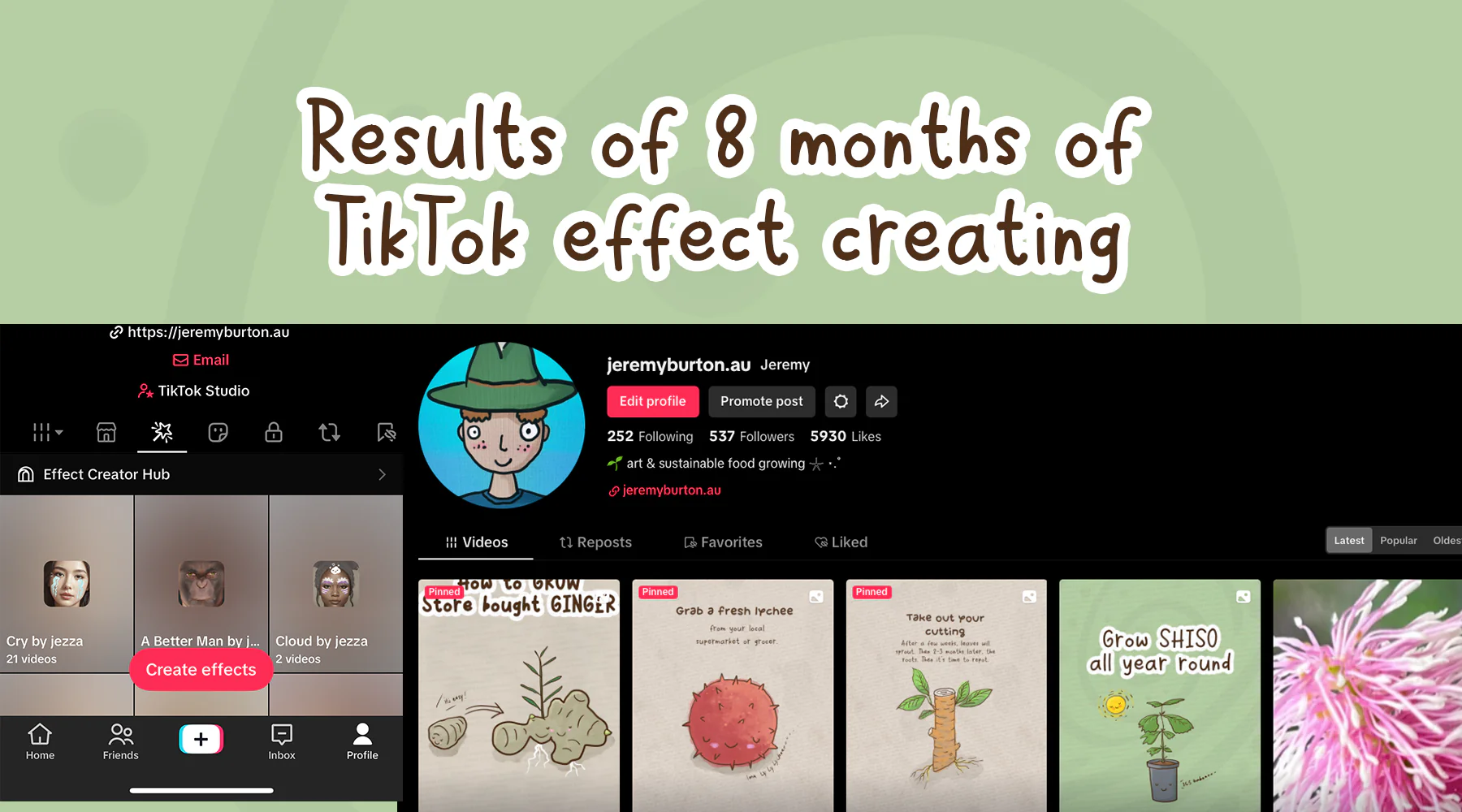
Results of eight months of TikTok effect creating
I’ve been creating TikTok effects fairly regularly until recently when life got busy. My motivations were these:
- I’m into augmented reality
- 2D & 3D painting and artistic work is fun
- Wanted to see what the results were, because the actual creating is not that time consuming and fairly enjoyable
- Here’s my TikTok
Here’s some stats of where I’m at after eight months of creating (Mar 2025):
- Created effects: about 70 (quite a pace, looking back)
- Main viewers: Pakistan 22.5%, Burkina Faso 8.2%
- Main creators using the effects: Indonesia 22%
- Viral effects: 2 (over 1M views each)
- Biggest effect: 1.1M views
- Total views: 2.3M
- Views last month: 1.1M
- Video posts by users: 4.2k
- Effect tries: 160k
- Shares: 11k
- Likes: 115k
- Global top 1% of creators
- Money made: Zero, lol
Other notes
- You can learn more about creating TikTok effects here – https://effecthouse.tiktok.com/
- My TikTok profile is a modest testing ground with 537 followers, 5k likes
- Although not really related, I do have a TikTok business account
- Tested running TikTok ads for some of my gifts in my online store
- I’ve had creator agents contact me for collabs
- Tested live streaming and earnt $0.16 cents
- Live streaming agents reaching out with offers to join their agencies
- TikTok has gamified the creator ecyosystem with levels. I’m level silver, once you get to Gold and Platinum, you start earning $ for your effects.
What has the effect creating translated to?
- New followers on TikTok from creating the effects: Likely zero as I don’t post videos about my effects on my account
- Money: Zero dollars so far. You need 3 videos that have been used (and posted) over 1k times to get monetised. I have 1 with 2 more working their way towards 1k
- Some very interesting insights into who likes what, how and why people use the effects
- Quite a bit of fun!
Learnings
- The creation software is getting quite sophisticated but is still accessible and simple to use for creators
- The drag and drop user interface is at a level for a non-programming artists like me
- Effects get tested and served to audiences just like TikTok videos and controlled by algorithms
- Viral effects can take off immediately
- Anything over 100 video posts (100 people use it and post publicly) and the effect will generally grow pretty big
- Previously, effects grew and stopped growth completely. The algorithm seems to have changed though, old effects I created are getting rediscovered and growing again
- The analytics in the TikTok app are updated live, whereas the web analytics in your dashboard are updated overnight
- TikTok effect analytics are not in the TikTok studio (where your general account and LIVE stats are). WHY I have no idea, so figuring out the bigger picture takes some analysis
- Also, the analytics for effects in the web dashboard are very basic. You don’t learn much from what’s provided
- Effects are vetted for any naughty stuff
- Brand-wise, there are NO RULES. You can post whatever the heck you like. I can impersonate Pepsi and the effects still get through
Wrap up
It’s been an interesting time investment and my motivation remains the same, to just have a bit of fun in between life and see what happens when / if I get monetised.
It’s an interesting thing to have so many people across the world use your art on themselves. I hope it’s brought some joy to some.
If you’re looking to give it a go, I would encourage you to check out the Effect House website and do some of the learning tutorials. And there’s a community where people discuss effects.
My approach has been to make interesting, human-made effects. I think I tested the AI functions once. It’s definitely a long term thing to get monetised. So I expect studios with teams would be able to smash the effect creation and then the question would be, how much would they make from the traffic generated.
Catch me on threads if you’d like to talk more TikTok Effects.
Jeremy Burton is a TikTok effect creator, based in Perth, Western Australia.
